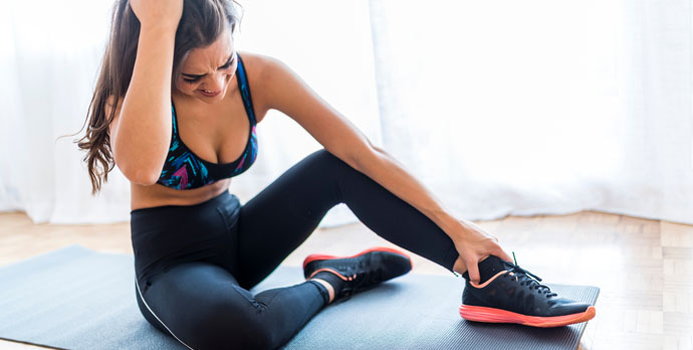No matter what type of athletic activity you do, your feet are going to bear the greatest brunt of your training. Running, cycling, walking, sprint training, sports, and even resistance training can all place a lot of strain on your feet, which is why shoes are designed specifically for each activity you do.
Of course, if you’re not wearing the right shoes for the workout, there’s a risk you’ll make the damage worse! How can you know if you’re wearing the wrong footwear for your workout? Here’s a handy guide to athletic shoes.
Weightlifting/CrossTraining Shoes
For lifting weights or crosstraining, heel stability is key. Your feet are going to bear the heavy load of the weights you’re lifting, so you want a shoe that offers good support and stability.
Cushioning isn’t required for weightlifting shoes, but the ideal shoe will have a fairly flat, level sole, one that encourages better balance. The solid, flat base will give you a sturdy platform to lift from as you squat, lunge, and jump.
Crosstraining shoes are designed for weightlifting, but with a little extra cushioning to reduce the impact on your joints as you run and jump. They’re intended to be used for all activities, but they don’t specialize in any. That means they won’t be good for long-distance running, sprinting, or hardcore jump training, but they are good if you mix in a few minutes of running or jogging into your weightlifting, plyometric, or CrossFit workout.
Running Shoes
Running shoes come in two different styles:
- “Traditional” running shoes, which have more cushioning built into the heel and midfoot in order to reduce the impact on your heels. Seeing as most people run heel first, that’s where the extra cushion is needed as you transition from landing to pushing off your forefoot. For most people, the cushioning is vital, as it prevents foot strain and joint damage.
- Minimalist running shoes, which have soles slim enough to mimic the natural curvature and structure of your foot. The idea behind these shoes is that they encourage you to run the way your body intended, and they simply provide basic protection from the elements and rough surfaces without reducing impact.
Sports Shoes
Sports shoes are designed specifically for the sport you will be playing: basketball shoes come with added support for your ankles, reducing ankle injuries as you run and jump; soccer shoes include cleats to offer better grip on the grass/turf and a low profile that allows for more accurate kicking; volleyball shoes are lightweight with extra grip for indoor courts; and the list goes on.
If you’re playing sports, it’s vital that you find footwear designed specifically for that sport. Each sport has its own requirements (running, jumping, sudden lateral movements, etc.), which means you’ll need a shoe that will maximize your physical performance for that sport.
[Image via Shutterstock]



